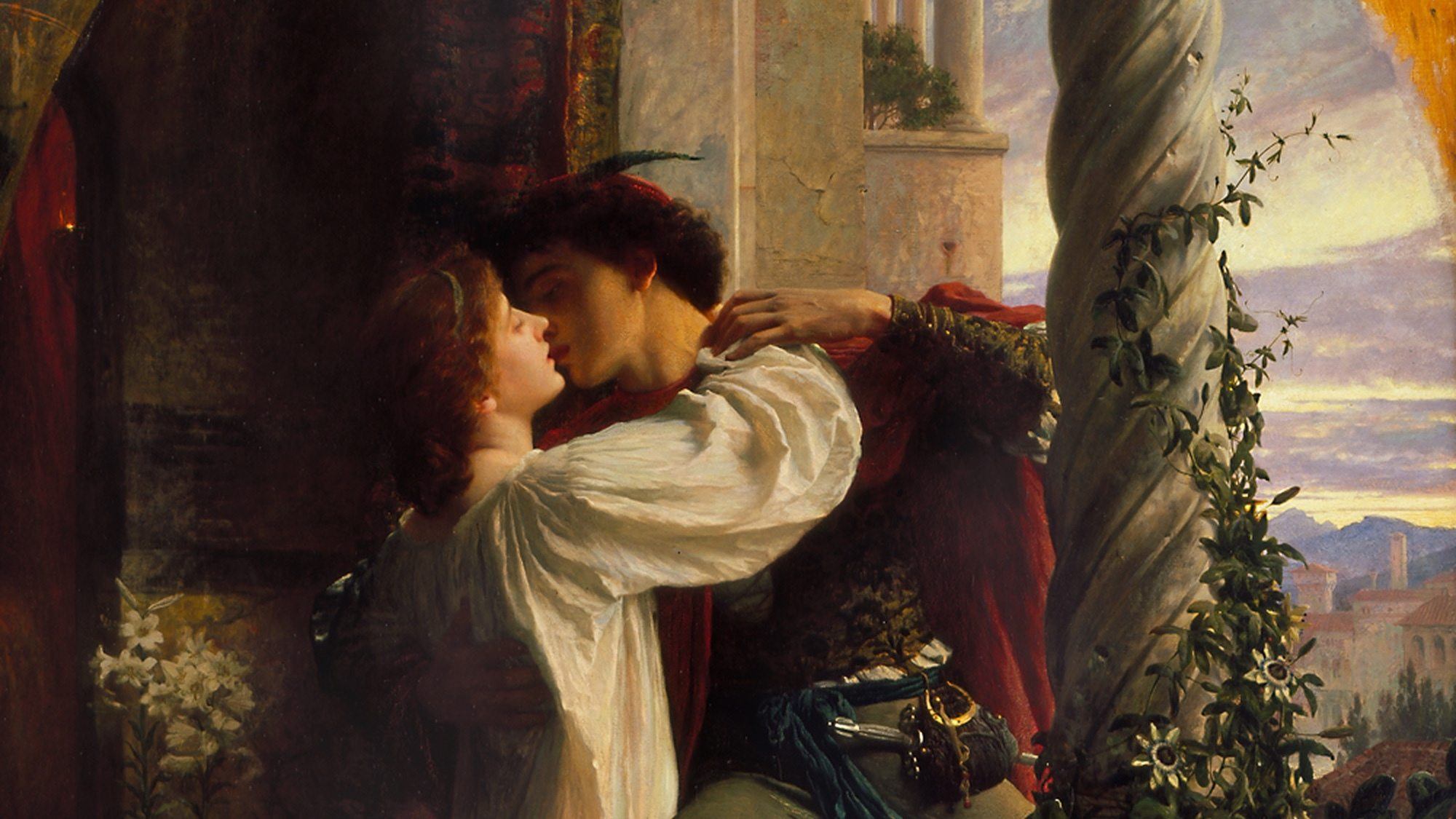Character lies at the heart of Sergei Prokofiev’s 1935 ballet score, Romeo and Juliet, Op. 64.
In the opening bars, the alternating forces of darkness and light become metaphysical “characters.” Demonic dissonances in the brass roar and subside, revealing an angelic string “choir” which seems to have been present all along. It is this battle between the baseness of the world and transcendent higher powers which underlies Shakespeare’s story.
A heavy, groaning march depicts the feud between two families, the Montagues and Capulets, which grinds on, senselessly. In contrast, the sun drenched music of the adolescent Juliet is filled with endearing naivety and sudden mood shifts between youthful exhilaration and introspection. The shimmering “balcony scene” is accompanied by a soaring melody which suggests both passionate longing and the subtle foreshadowing of tragedy. A plodding hymn, intoned by the bassoon, tuba, and low strings, depicts Friar Laurence.
Prokofiev’s score includes quirky, exotic melodies and the dizzying energy of a sword fight (Death of Tybalt). Romeo’s anguish at the grave of Juliet brings a searing remembrance of the “balcony scene.” Amid a horrifying harmonic disintegration, the previously vibrant theme is heard in the clarinet, where its lifeblood seems to drain away. The curtain falls with a glistening C major chord. Amid tragedy, the highest instruments of the orchestra leave us with a transcendent beam of light.
The commission for Romeo and Juliet from Leningrad’s Kirov Ballet (now the Mariinsky Ballet) came at a time of transition for Prokofiev. In 1935, the composer was lured back to the Soviet Union after nine years of self-imposed exile in Paris and the United States. With Shostakovich at odds with Stalin’s government, Prokofiev believed, falsely, that he could appease the Soviet censors and assume the role of the country’s preeminent composer. During his first summer back in his homeland, Prokofiev composed the Romeo and Juliet score in a small cottage outside of Moscow at the artists’ retreat of Polenovo.
Originally, Prokofiev planned an altered ending in which Romeo arrived in time to find Juliet alive. Later, the composer justified the change, observing that “living people can dance, the dying cannot.” The change became controversial with Soviet officials, who normally favored uplifting art. Meanwhile, political turmoil caused the Kirov contract to fall through. A new agreement was signed with Moscow’s Bolshoi Theater. Yet, Prokofiev’s score was deemed “undanceable,” and the production was postponed indefinitely. A quiet 1938 premiere took place in Brno, Czechoslovakia. In January, 1940, Romeo and Juliet was finally performed on the Kirov stage.
With the ballet’s staging unassured, Prokofiev transformed the score into a series of orchestral suites. In an effort to capture the dramatic arc of the story, frequently conductors have drawn selections from both suites. This is what we hear in the recordings below. The complete ballet score includes additional obscure treasures, such as the unforgettable Dance with Mandolins.
This celebrated 1969 studio recording features Karel Ančerl and the Czech Philharmonic Orchestra:
- Montagues and Capulets
- Juliet, the Young Girl
- Masks
- Romeo and Juliet (the Balcony Scene)
- Friar Laurence
- Dance of the Girls With Lilies
- Dance
- Death of Tybalt
- Romeo and Juliet Before Parting
- Romeo at Juliet’s Grave
Here is Riccardo Muti’s 2013 concert recording with the Chicago Symphony Orchestra:
- Montagues and Capulets
- Juliet, the Young Girl
- Madrigal
- Minuet
- Masks
- Romeo and Juliet (the Balcony Scene)
- Death of Tybalt
- Friar Laurence
- Romeo and Juliet Before Parting
- Romeo at Juliet’s Grave
Five Great Recordings
- Prokofiev: Romeo and Juliet, Scenes from the Ballet, Karel Ančerl, Czech Philharmonic Orchestra Amazon
- Prokofiev: Suite from Romeo and Juliet, Riccardo Muti, Chicago Symphony Orchestra Amazon
- Paavo Järvi and the Cincinnati Symphony (complete suites from the ballet)
- Lorin Maazel and the Cleveland Orchestra (complete ballet)
- The Bolshoi Ballet, Yevgeny Mravinsky, Leningrad Philharmonic Symphony Orchestra (a performance of the complete ballet)
Featured Image: “Romeo and Juliet” (1884) by Frank Dicksee


If there’s one performance that’s undoubtedly never gotten enough love, it’s Erich Leinsdorf’s 1978 recording with the Los Angeles Philharmonic. The performance is spectacular, surely better than some recordings cited “best of.”
Unfortunately, it’s only 36 minutes. Leinsdorf didn’t record significantly more of the ballet, although his earlier, less successful effort with Boston did feature more music.
Here’s Leinsdorf / Los Angeles:
https://youtu.be/VBJW14_RXwQ
Thanks!
Thank you for sharing this recording, Brian. The listed recordings should never be taken as an exclusive list of “the best” options. I’m always happy to hear the suggestions of others.
Shocked that the Bolshoi had collective tin ears over the music! Fortunately, they got over it. For me, the recording by Andre Previn and the London Symphony Orchestra is my favourite version of the whole ballet – it has a very Italian feel to it, heard best in the Mandolin Morning Dance. Some other versions sound like balalikas – true to Russian, no doubt, but the ballet’s set in Italy guys!
One of my desert island pieces,the irony of his living in Stalin,s oppressive Russia writing less dissonant music which is some of his greatest compositions.